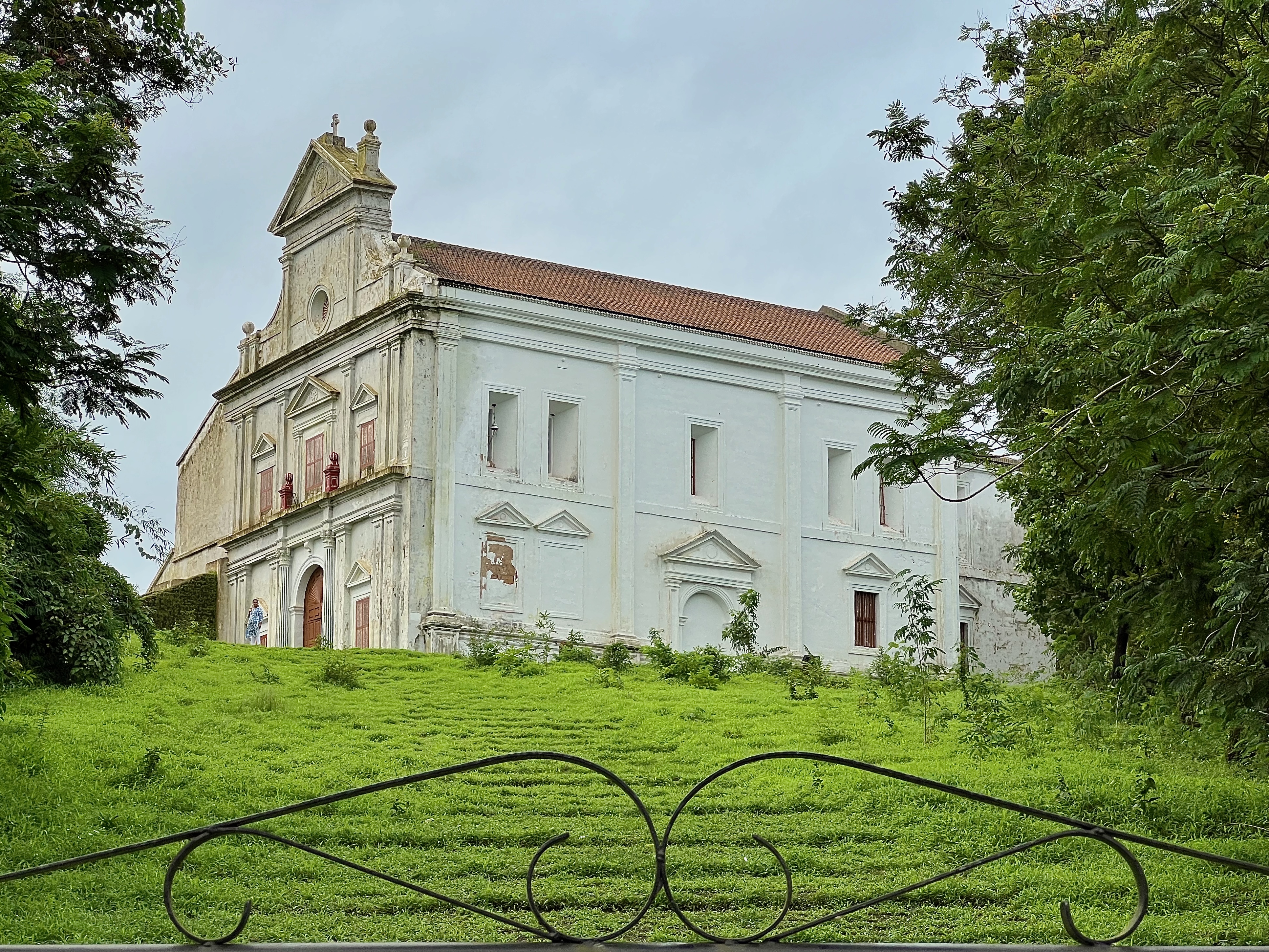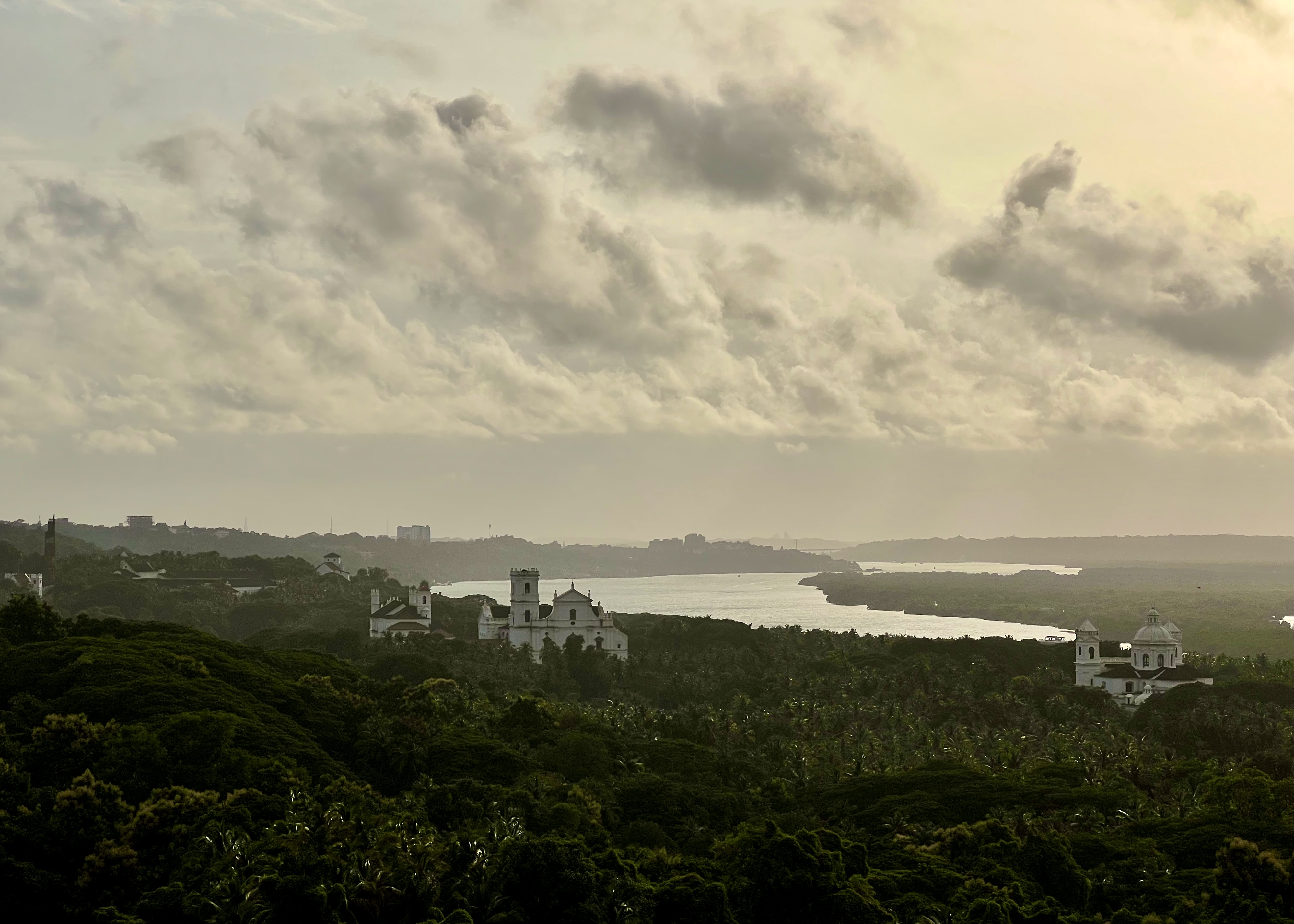Goa’s ‘Guzaarish’, and the magic of monsoon melancholy
“There is life and there is death, and there are beauty and melancholy in between.”
– Albert Camus
Towards the end of Sanjay Leela Bhansali’s ‘Guzaarish’ (2010) comes a song that has stayed with me like few others: ‘Dhundhli dhundhli shaam hui/Ab toh waapas aa jaao.’ The refrain registers a misty evening and a plea for the return of someone close. At once evoking Raag Yaman and a Western classical symphony, this deeply contemplative number from Bhansali’s first major foray into music direction wistfully merges sight and sound. Visually, it begins with a quick glimpse of the film’s quadriplegic protagonist Ethan Mascarenhas (Hritik Roshan), who lies supine and saddened after losing his court petition (‘guzaarish’) for euthanasia. The camera then lingers over non-human elements for the remaining part: a large sculpture of a dreaming angel, a moored boat’s still silhouette, an old mansion’s quietly imposing facade, and two cloistered interiors, all bearing the reflectiveness of a rainy evening. This is the film’s central space and Ethan’s ancestral home, Villa Mascarenhas, that is perched atop a hill overlooking the lush tropical landscape of Goa.
 Interiors of a Portuguese mansion in Goa from the colonial times, that appears briefly in the film.
Interiors of a Portuguese mansion in Goa from the colonial times, that appears briefly in the film.
Declared a flop within days of its release but garnering something of a cult status in recent times, ‘Guzaarish’, and especially the song ‘Dhundhli dhundhli’, has often drawn me towards its frames, teaching me much about the ways in which one might capture a geography’s many moods. Being a photographer and musician myself, I have long treated the composition as a fountainhead of my artistic imagination. It is also with this film that the yearning to experience Goa during the monsoons was first ignited, given the narrative’s preoccupation with water. So when the opportunity to visit the beautiful state in the months of July and August arose with the awarding of a writing residency, it felt like a joyous pouring from the heavens. Finally, I said to myself, I would be in the Goa of ‘Guzaarish’.
Popular imagination doesn’t immediately view this place in grey palettes. What gets commonly circulated is a picture of sun and fun, bright beaches and jovial jamborees dotting the coastal terrain late Autumn onwards. But as the year approaches its middle phase, the sky and sea start undergoing colossal change. Water assumes a palpable oneness, a singularity of sorts that rubs over the entire terrain, thickly binding the two realms across the horizon. Thus commences the in-situ South-West monsoon that one had first read about in schooldays. Since the closest sea viewing-point lay just a stone’s throw away from my institution, I was privileged to partake this magic in all its resounding glory. As mammoth grey sheets of the Arabian Sea solemnly mirrored the heaving heavens above, mist-screens frequently descended upon the field of vision. But within minutes, these gossamer apparitions would fade away in wind and rain, while the foaming waves continued fanning out in giant parabolic arcs, whooshing languidly. ‘Dhundhli dhundhli shaam hui’ never felt more real, more perfect.
 Our Lady of the Mount Chapel built in 1519 by the Portuguese, that serves as Guzaarish’s Villa Mascarenhas.
Our Lady of the Mount Chapel built in 1519 by the Portuguese, that serves as Guzaarish’s Villa Mascarenhas.
Despite Bhansali’s previous films’ habitual invocation of natural imagery, it was only with ‘Guzaarish’ that I truly started appreciating the director’s command over exteriors. As I walked and drove around Goa, the film’s lush greenery kept flitting through my mind, inspiring me to photograph the unfolding scenarios in similar ways. Beholding the grand panorama of the state’s old whitewashed churches, I was transported to the scene immediately preceding ‘Dhundhli dhundli’ where that very scene had come alive for me for the first time: vast swathes of greenery teeming amidst the backwaters of the meandering Mandovi river. While the gleaming waterways and drifting clouds instantly added to the moodiness of the season, a certain fluidity was apparent in the lush vegetation too. For the countless coconut canopies and the signature arcing of majesty palms steadfastly recalled the poetry of fountains.
As with nature, so with architecture. From my very first viewing of the film, I had desired to visit the structure that had been used as Ethan’s home. Some research on the internet revealed that despite Goa’s profusion of heritage homes, it was a 1519 Portuguese site of worship erected in the Mannerist style that had been transformed into Villa Mascarenhas. With the film’s melancholic score still echoing in my imagination, I finally reached the lofty perch of ‘Our Lady of the Mount Chapel’, lying at a distance from the regular tourist map. Offering my prayers in the descending dusk, I was seized by the theme of suffering underlining the whole of ‘Guzaarish’ and indeed, Christian imagery as well. Once again, the real and the reel congealed into something bigger, almost akin to a vision, lending my trip the passionate thrust of a serendipitous pilgrimage.
 Old churches perched amidst vast swathes of greenery.
Old churches perched amidst vast swathes of greenery.
As days went by and I got acquainted with many other sites featured in the film, I found myself dwelling recurrently on the idea of melancholy and its inherent connection to beauty. This was an emotion that was at the heart of so much Indian culture too; why else would monsoon ragas sing of the season’s luxuriance while simultaneously equating it to tears and separation? I further recalled the philosopher Alain de Botton’s observation that “melancholy is a key mental state and a valuable one, because it links pain with beauty and wisdom.” Throughout Bhansali’s film, that forges an intricate link between Ethan’s desire to die with dignity and yet enjoy life to the hilt, it is this link that repeatedly comes to the fore, so that sadness and celebration eventually materialise into two sides of the same coin.
And yet, for all of art’s capacity to offer profound truths, there remains a line of thought that argues otherwise. Beauty — and especially the stylised kind upheld by Bhansali’s cinema — is often said to detract from the real world. But if my Goa trip made one thing abundantly clear, it was that art only enhances the appreciation of reality in rich, rewarding ways. And what CS Lewis said about fictional forests held true for cinema too: “He does not despise real woods because he has read of enchanted woods; the reading makes all real woods a little enchanted.” How could I ever despise real Goa because I had soaked in its alluring onscreen portrayal all those years ago? Now that I have straddled the state’s many spaces through a filmic lens, its terrain has ineluctably become even more bewitching than it would have been otherwise. For it is no longer merely a filmic site but also a site’s film, as well as its intrinsic feeling: ‘Guzaarish’s Goa to Goa’s ‘Guzaarish’.
— Pandey is a writer, artist and cultural historian from Shimla
Arts